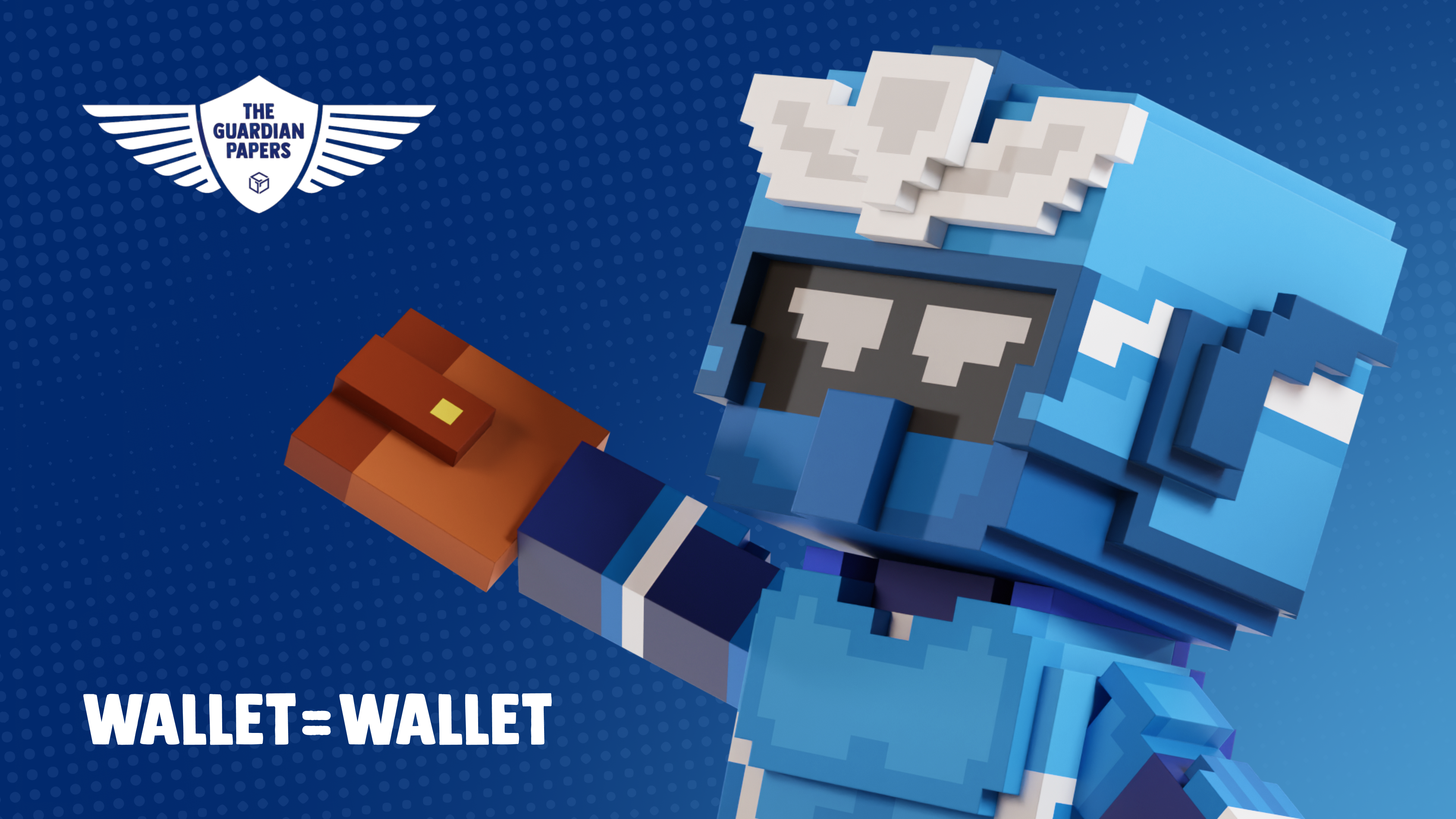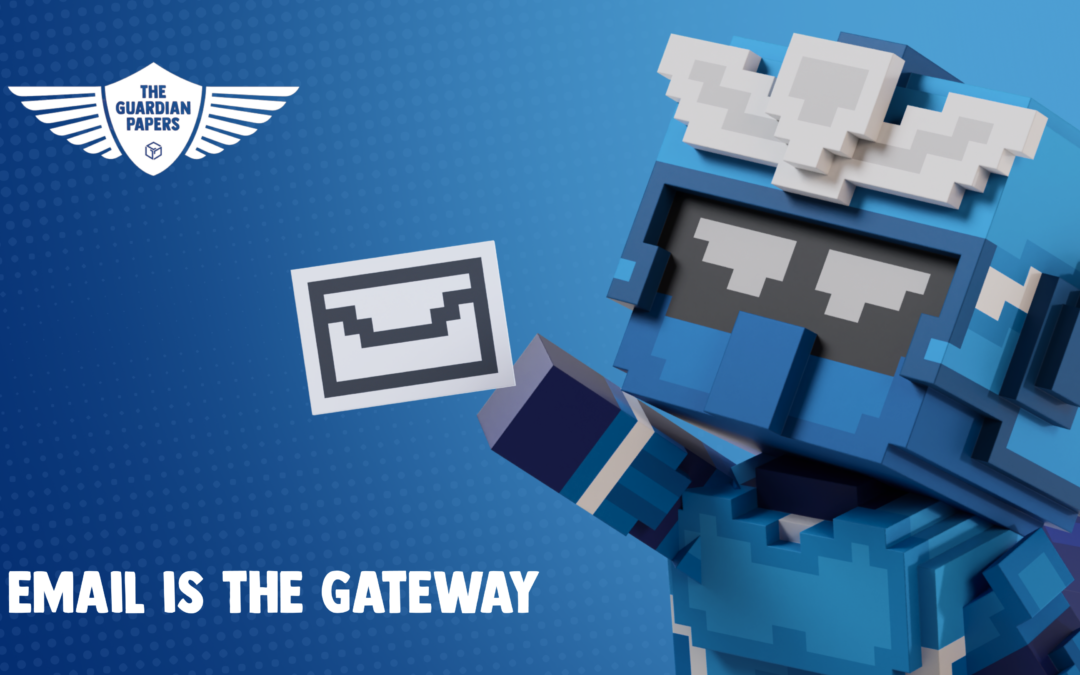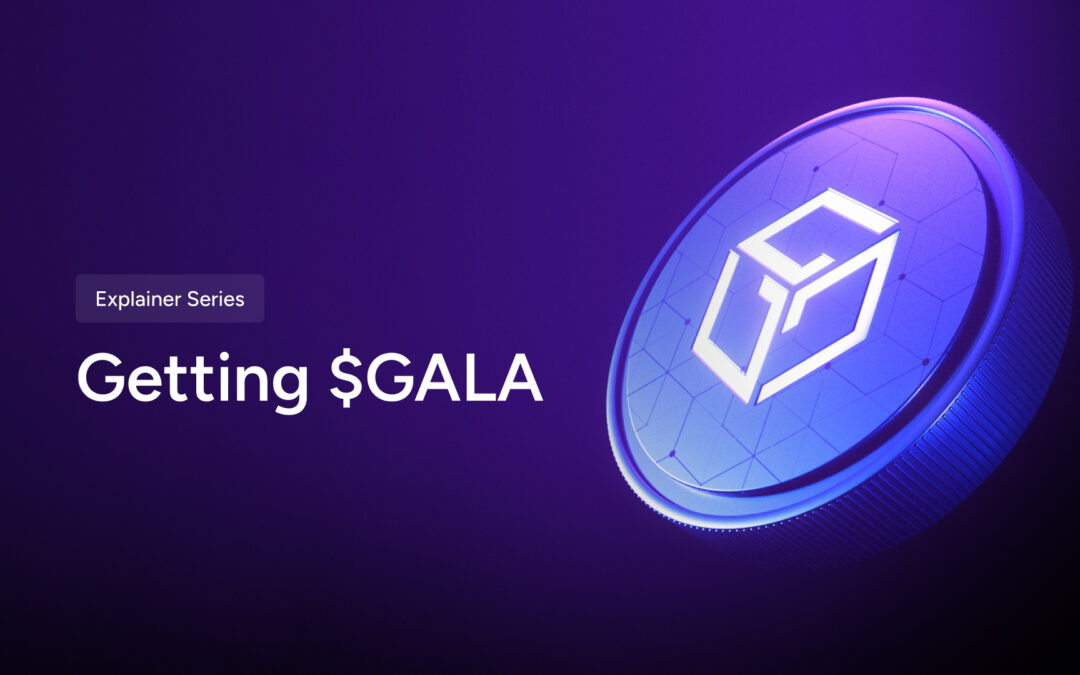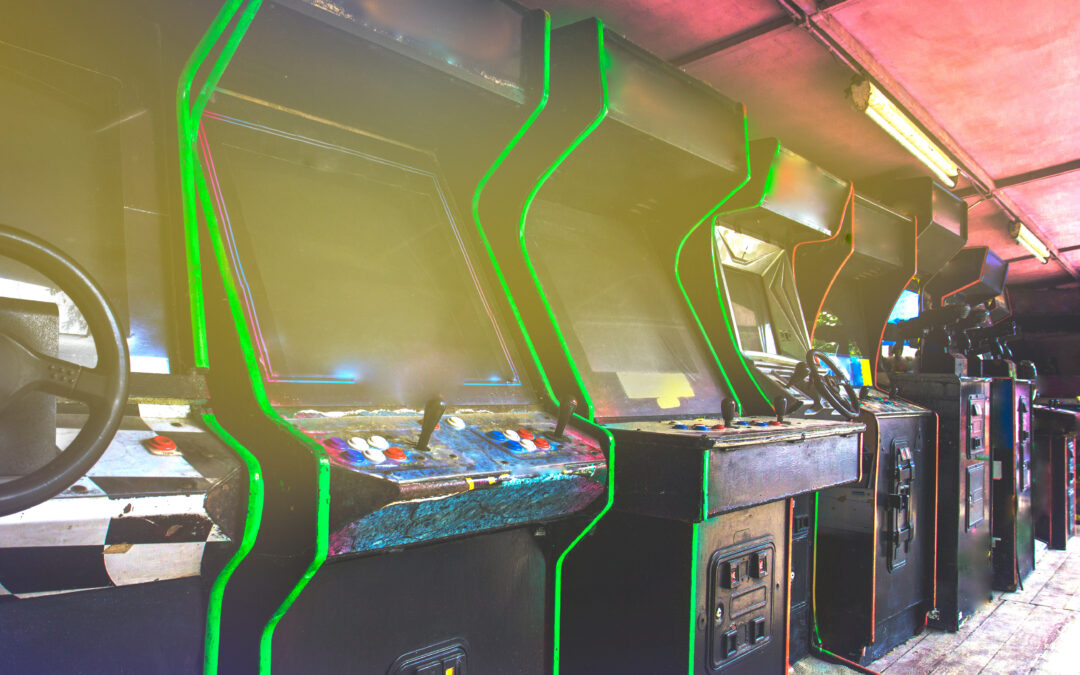When you get change back at the grocery store, do you tell them to hang onto it until next time? No! You put that money in your wallet where you can ensure that your property stays protected. This is the exact same in the world of blockchain. Your wallet allows you to safely store digital items like currencies and NFTs in a private place where you always have control over your property.
Welcome to our 3rd installment of The Guardian Papers – the series where we discuss how best to defend yourself from threats in the digital frontier of blockchain technology.
The revolutionary concepts of blockchain have the potential to create a better world and offer new and exciting opportunities for all its early pioneers. Just as opportunities exist for those noble individuals who champion this fledgling community, however, the villains that lurk in the shadows will also capitalize on weaknesses whenever they can.
The best defense for all of us against the thieves, scammers and general malcontents in this space is to propagate the knowledge and skills that can empower our entire community to feel empowered to defend themselves. Then we can look out for each other, serving as sentinels against all threats that may harm any citizen of the digital world.
What is a Blockchain Wallet?
The idea of a wallet seems simple enough. It’s the place where you put your money. There are certainly nuances that should go into a more formal definition, but that function is consistent with any wallet– from that leather tri-fold in your pocket to that slick hardware wallet that protects your valuable coins, tokens and NFTs.
Unlike those scraps of paper and shiny bits that people may put in a traditional wallet, however, in the crypto world your digital assets exist on the blockchain and can’t be folded up and taken with you. The blockchain itself records the history and protects the security of your transactions, and a wallet gives you your own private parking spot on the chain itself.
A place to put your stuff on the blockchain only fills half the purpose of your wallet though. As we’ve previously discussed in regards to private keys, you need your keys to be able access your assets. What good is a wallet that doesn’t open, no matter how well it protects your money? In addition to offering you an address to store your assets on the blockchain, a wallet must also offer you keys to securely access your digital hoard.
Caption: With a properly secured wallet, you can soar through the blockchain world with confidence!
What’s the Difference Between Wallet Options?
Your wallet offers you the security of having a blockchain address with public keys so you can receive and store your assets, as well as private keys so that you can securely access them.
Beyond those two points, however, there is a wide variety between different wallets and their functionality. Often people will use multiple wallets throughout their financial infrastructure for different types of assets and situations.
Supported Assets
There are many different blockchains out there, and each coin and token functions on a specific blockchain. There are certainly exceptions to this rule when dealing with more complex topics like bridges, wrapping and layer 2 solutions – but no wallet is going to support every chain and asset that exists.
The wallet provided as part of your Gala Games account is based in GalaChain and can support transactions throughout the entire Gala Ecosystem. It is also compatible with the Ethereum Network, and can bridge between the two chains using the Gala platform and hold any Ethereum assets, such as ERC-20 tokens.
It’s important to note that you can’t just send any asset to any wallet. You’ll notice that your Gala Inventory shows a different address for Ethereum and GalaChain. These are not interchangeable! Attempting to send your assets from Galachain to a blockchain address that doesn’t support them could easily result in your treasures being lost in the void of digital space.
Occasionally, you could wind up with more assets in your wallet than you realize. You’ll often need to set up support for a token on a particular wallet. In these cases, even though your items are in your wallet, you won’t be able to see them through your wallet until you follow the wallet’s procedure to add the token.
Hot vs Cold
Whether a wallet is “hot” or “cold” refers to if it has any connection to an external network. A hot wallet is any wallet that is stored on a device connected to the internet or any other network that allows it to potentially be accessed from outside the device itself. This covers most of the widely used wallets out there.
While you may only transmit public keys to sign transactions, your private keys can still be vulnerable to sophisticated attacks from outside forces. Hot wallets can certainly be secure, but also require that you pay very close attention to device security and protection and who you connect your wallet with.
Cold wallets aren’t connected to anything on any network. Your loot exists on the blockchain itself, but cold wallets store the keys to it safely offline where they can’t be accessed unless villains happen to get their hands on not only the physical device itself, but also acquire any needed passwords, PINs, seed phrases, or biometrics to open the vault. These can be set up on any unconnected device, but also includes standalone, dedicated hardware wallets that sign transactions offline within the device itself to access funds.
Features and Opportunities
Many wallets offer specific features and functionality that may make them preferable to use compared to other wallets. You may decide, for instance, that using a multi-chain wallet like Metamask is a better fit for you than another option because its browser extension is convenient to use and it can be used to hold any ERC-20 token, and it supports a ton of other networks.
You may opt instead for a more involved software wallet that offers more onboard analytics and data so that you can use it much more as a one-stop-shop for your asset management.
Just like with the management of physical assets, sometimes what works best for you has more to do with things like location and efficiency. Though the idea of location is a little different in the digital world, thinking of different blockchains as bordering countries may be a useful comparison.
There are usually ways to send your assets from their native chain to another, but it is usually far less convenient than transacting within their ecosystem within the chain. This may mean that a wallet with access to an address on a certain chain could prove more useful to you than another based on what your plans are with your digital treasures.
When Is a Wallet not a Wallet?
Your wallet and the keys that access it are your personal sovereignty in the blockchain world. There are many different types of wallets out there, but it is always important to remember that if you do not control it, it’s not your wallet.
Blockchain technology was founded on the pursuit of trustless systems. While that manifests as a spectrum across different platforms and ecosystems, if it’s not your keys, it’s not your crypto!
While having assets intertwined in curated ecosystems like centralized exchanges happens sometimes, the private keys to these coins and tokens are held by the company who runs the exchange.
A centralized exchange may have a native wallet that allows you control over your keys, but anything on the exchange itself is simply a representation of your share of ownership over the exchange’s wallet. This is often functionally the same… but in a pinch, a corporation is less worried about your interests than their own.
Reinforce Your Wallet
Your wallet is your personal treasure trove in the blockchain world, so you need to fortify it as best as possible. As we’ve discussed previously, this starts with protecting your private keys. If your most valuable treasures are stored in your own private vault, how fervently should you protect that one key?
Protecting your wallet isn’t just about keeping the bad guys out, but also ensuring that you can always get in. Recovery phrases should always be stored offline– preferably in non-digital, non-perishable formats. Getting fancy with spy-like security can be fun, but what good is your super-secure hard drive storing your recovery phrase when you spill your coffee on it?
Sometimes an old-fashioned piece of paper tucked safely in some hiding place where it will be undisturbed is the best option. If you lose important information like your transfer code and recovery phrase, there may not be much anyone can do to save the day.
Guardians of the Digital World
We’ve covered a lot already in The Guardian Papers, but we’re not through yet. If you’ve missed anything that we’ve covered in our past installments, catch up below:
In our next few installments, we’ll be diving into the mind of a digital villain and breaking down some of the most common scams in the crypto world and their variations. It’s easy to think that you’ll never be fooled by those kinds of shenanigans – countless blockchain warriors have thought the same. Many have fallen to these same tactics.
More knowledge about how these enemies of personal, on-chain sovereignty can only improve your arsenal to both defend yourself and to fight back by helping to educate your fellow citizens of this new world.
If you’d like to get started exploring how to get more out of your wallet, you can check out our support article on how to import your Gala Wallet into Metamask so that you can seamlessly tie your GalaChain assets into your profile on multiple chains. While you’re there, check out some other topics. Buffing your knowledge buffs your security, and none of us can let our guard down until everyone is informed enough to be secure!





